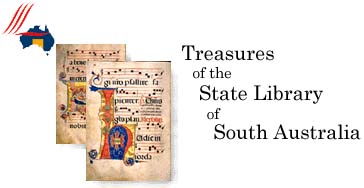
 |
|

StructureThe Antiphonal is written on vellum, or animal skin which has been stripped of its hair and put through a series of processes to dispose of fat, smooth away blemishes, and refine to a smooth surface. The rougher, more yellow side of the sheet, which may be marked with little black specks in places where the hair follicles were if the animal was large, is the outer side of the skin, and the inner side is paler. When well prepared, vellum is easier to write on than paper.
The skins of a range of animals were used, depending on the size
and quality required.: for a small fine manuscript, the foetus
of a calf might be used, yielding a skin as fine as tissue paper.
Pigskin was unsuitable, because the bristles had such large follicles
the skin would be heavily pitted.
To protect the codex, as this text block of pages was first called,
wooden boards were attached back and front by cords which had
been integrated into the sewing structure. The cords were inserted
into holes in the boards and fixed with wooden pegs, and the manuscript
then had an outer protective covering, which was quite often augmented
by metal studs. A medium as firm and heavy as wood was necessary to keep the vellum text block in shape, because skin flexes and shifts with changes in temperature and humidity. We still call the covers of a book the boards, despite the fact that for over three centuries now cardboard has been used instead.
To create a huge manuscript such as the Antiphonal in this way
was a big commitment on the part of a monastic community. It is
most unlikely that a monastery would have sufficient resources
within the community to supply the skins, so the vellum would
have had to be bought in. It may have been gradually accumulated
over many years. |

Copyright and this website | Disclaimer | Privacy | Feedback | Accessibility | Freedom of Information | Last update on 20 December 1997
The URL for this page is http://www.slsa.sa.gov.au/treasures/antiphonal/creation.htm